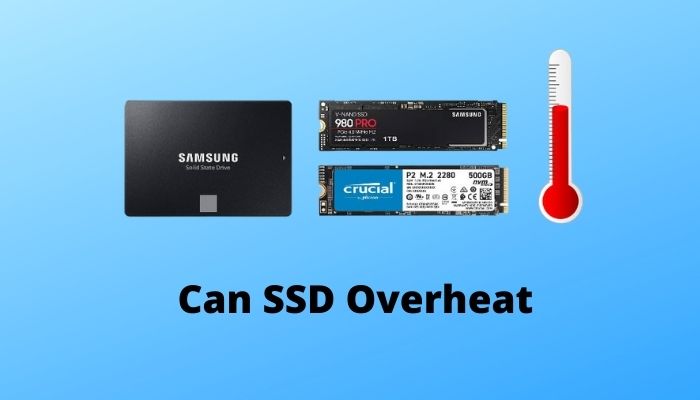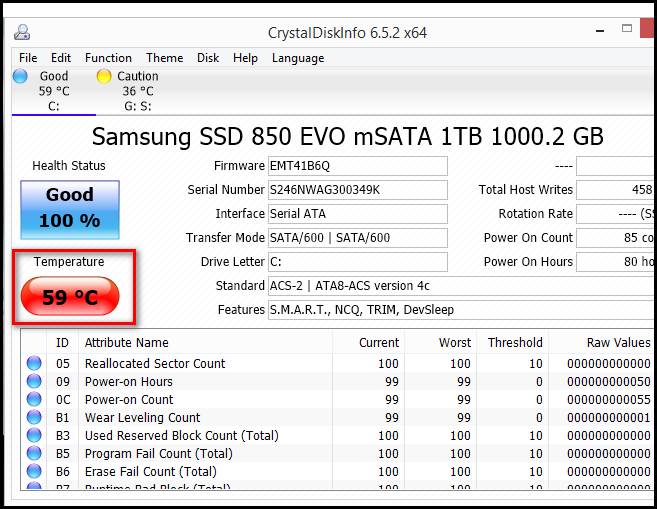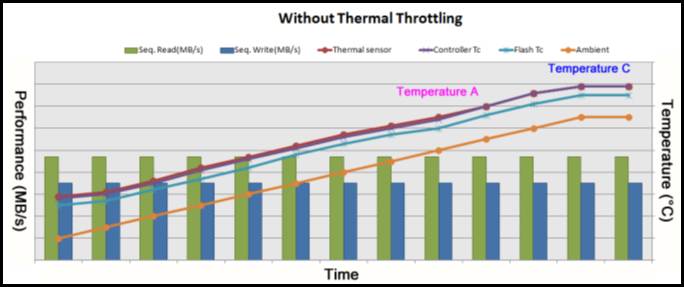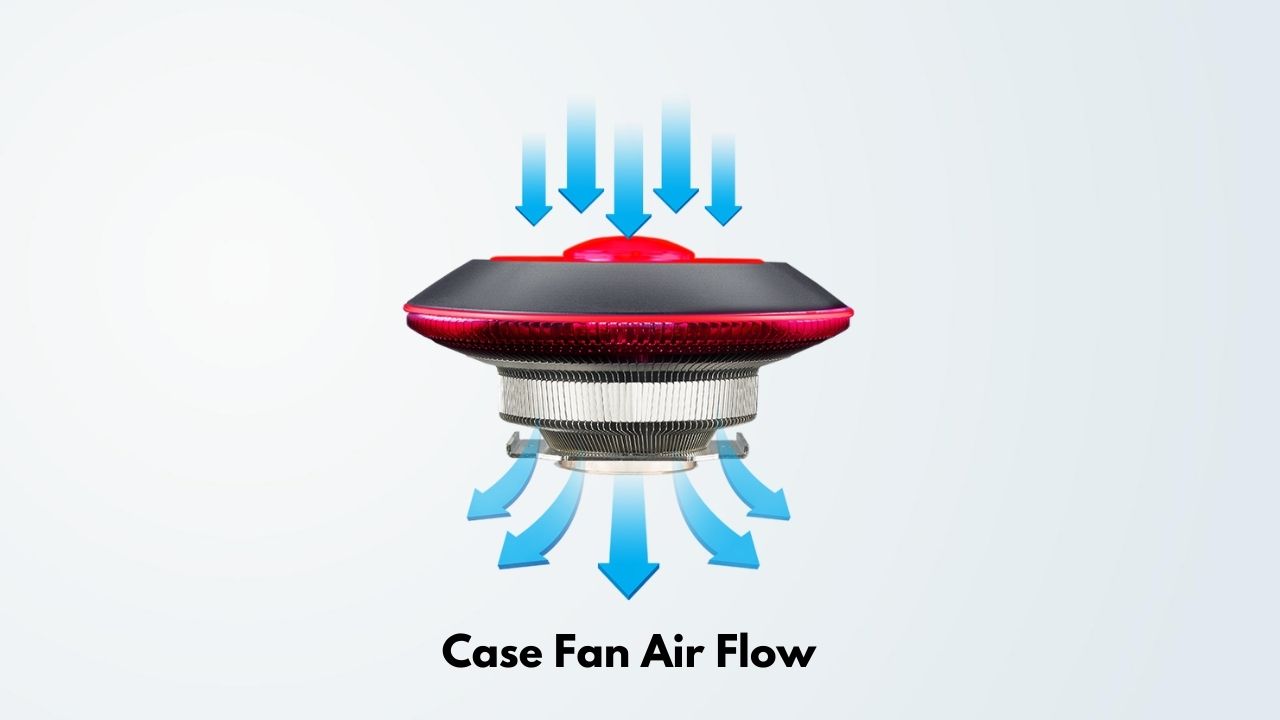If you have bought a new Solid State Drive (SSD) and wondering about do SSDs get overheated like the Hard drive you used to apply earlier on your PC, then this article is for you.
As an experienced PC builder, I have faced overheating issues on several components of my computer. Overheating is a major problem when it comes to HDD as it has a spinning mechanism for storing data. It gets heated up quite regularly.
So, like its predecessor,
Can SSD overheat?

If you want to learn more about this issue, don’t go around and start reading the rest.
Why Does SSD Overheat?
Even though SSDs have no moving parts inside and consume less power, they can get very hot during operation. Usually, they are warmer than the average hard drive by about 10°C. Most SSDs available in the market are rated for running inside a temperature range of 0°C up to 70°C.
When it gets higher than that, it can create some problems. But why do they overheat? I’m about to explain the reason behind it. Read attentively if you have been wondering about this question.
Here are the reasons behind this issue:
- Extra workload: SSDs get heated up when the workload gets higher than average. That includes continuous reads and writes.
- Cooling System: Inappropriate cooling system of the computer case and the drive can also be behind this. Dust on the cooling system, failed ventilation, high room temperature, narrow and closed space for a drive can make your SSD easily heated up.
- Firmware issues: Unupdated firmware of the SSD controller creates this problem more often. Performance and power-saving features of the controller firmware can also be the reason.
- Failing Drive: If your drive is falling then it starts to overheat on a regular basis. Bad sectors on your SSD and electrical issues can also be held for reasoning.
- Operating System: Sometimes, your SSD gets overheated if the operating system is not up to date. It is not common but, a significant amount of people have faced the issue for this reason.
- Malware attack: It is possible that your computer is under the attack of viruses, like malware, and you don’t use anti-virus that gives you proper protection. Some malware programs use disk space and run in the background. That heats up the system, hence heats up the SSD.

These are the reasons you can blame if your SSD gets overheated suddenly. But, don’t know whether your SSD is at the right temperature?
You don’t need to worry, In the next part, I’m gonna clear that out for you.
Go through our epic guide on Fix Motherboard Can’t Detect Hard Drive.
How Do I know if SSD is Hot?
Despite the lack of moving parts, SSDs can get really hot. If you don’t pay attention to the temperature readings from your SSD, you can lead it up to it’s death.
Do you know the fact that The hotter your SSD runs, the quicker it drains out the flash memory inside the drive?
As I mentioned earlier the Ideal temperature for an SSD is a range of 0°C up to a max temp of 70°C (32° F to 160° F). This range is the same for every consumer SSD available in the market right now.
This temp Varies with ambient temperature and differs slightly based on the model and the form factor of the SSD. But a driver under 70°C is considered as the operating parameter provided by the SSD manufacturer.

All of the above information was applicable for a regular SATA SSD. If you have one of these you don’t need to worry that much. These SSDs stay within a healthy temperature range on their own, just make sure of providing proper airflow.
M.2 SSDs are known to overheat a little bit than the ideal temp. If you are not using some kind of cooling solution like a thermal pad or heatsink, you can easily overheat the M.2 drives.
If you have understood the topic I’m trying to explain here, then I’ll suggest you a tool with which you can check the temperature of your drives.
- Hardware monitoring HWinfo: If you want to use this amazing tool, just download it from the internet and install it on your device. After the installation process, open it like any other utilities and you can notice it shows the temperature of all the drives available on your computer, not just the SSD. It shows the current temp, minimum and maximum temp for your drives.
NOTE: If you are using an SSD manufactured by Samsung, you can use Samsung magician software which is only designed for Samsung drives. It is more elegant than the other tool I mentioned earlier.
Now you have the information to determine whether your SSD is overheating or not. What if it does? What issues do you face when it overheats? Do you wanna know?
Bare with me for the next few minutes to get a complete overview.
In a hurry? Check out my new post on What are the fastest PCIE 4.0 SSDs.
What Happens If SSD Overheat?
SSDs have a fail-safe mechanism which is when it overheats SSD reduces its performance to lower its temperature. This reduction in the performance can get up to 50% or sometimes even higher depending on the operating temperature.
Even though it works perfectly but, overheating frequently can create bad impacts on SSD. What are those? I’m providing it for your sake.
- Slower System: When SSD overheats, it affects directly on your computer system. PC always needs a normal temperature to operate. If the operating temperature is too high PC will start to throttle, it will reduce the clock speed to minimize the temperature rise.
- Memory destruction: when SSD gets hotter than usual, the rising temperature softens the Flash cell structure and the cell retention time gets reduced drastically. At the same time, the destruction of hot cells also increases.
Moreover, Frequent overheating can reduce the lifespan of the SSD. It can also reduce data retention time In some cases too much overheating can damage the data stored in your drive.

Scary. Right?
You don’t wanna be in that situation. So, how can you keep it cool? Follow my instructions exactly if you want to avoid it.
Here’s a complete guide on how to add email signature in Outlook.
How to Prevent SSD from Overheating
If your SSD overheats on a regular basis, you should find out the cause and fixate the issue. But, if your SSD is running in the optimal temperature range then don’t try to cool it down.
Here’s how you can get lower temp on your SSD:
- Improve case airflow: If the airflow of your computer is not sufficient, not only the SSD but also other components of your computer can get hotter. To prevent that, Increase the ventilation system if there’s any other available. You can use a high static pressure fan on the side panel. Improving the airflow can help lower the temperature of your PC components along with SSD.
- Use dedicated cooler: If the previous solution doesn’t work, then you can always get a dedicated cooler to lessen the temperature. A dedicated cooler helps in reducing the SSD temperature significantly and it also prevents it from overheating even SSD is under a heavy workload.

You can use SSD mounting kit with fan. You can find it in the nearest computer shop.
- Avoid transferring big data: The primary reason an SSDs gets overheated is writing a large amount of data at a same time. Avoiding bulk transfer will help the SSD to rest between transfers. It will also give time to the SSD to cool down naturally.
- Try using antivirus: Sometimes, malware attacks can cause overheating your system as well as your SSD. Try using antivirus software to inspect that.
These are the main prevention you can take to avoid overheating. If the heating doesn’t stop, then I suggest, start backing up your data or try transferring it.
Check out our separate post on how many Microsoft Points do I have.
Conclusion
SSDs are great in terms of data transferring and reliability. But like every great thing, it has its own drawback, overheating. It can be a common issue as long as it does not happen frequently.
Here I explained why it happens and how you can overcome the problem. If you face any difficulty understanding, feel free to comment.





Hi
This is Hari from India.
My Consiteant(Brand Name) 512GB SSD STRUCKED , When Iam deleting files iam getting same files & Programes again . Kindly help on this.I think it is in Read only mode.I traed chkdsk & other tools. But it is not resloved.
Hello Hari, If your Consiteant 512GB SSD is stuck in a loop where deleted files reappear, check for read-only mode, adjust permissions, run a file system check, perform a virus scan, consider a firmware update, look for hidden files, and use third-party tools if needed. If the issue persists, back up data and format the SSD.
Note: Formatting SSD will remove all the data.